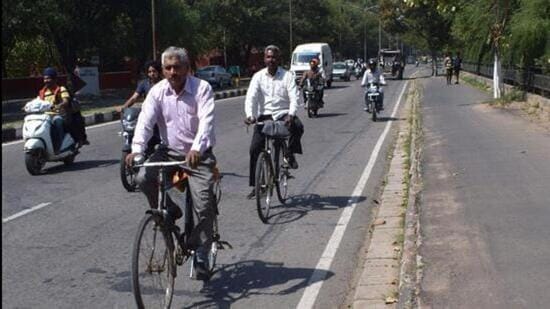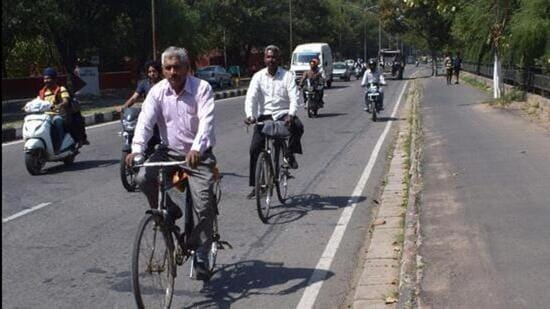Odisha mulls motor rule amendment for cycling, pedestrian track on highways
The new proposal says demarcation of designated street space for pedestrians, cyclists and other non-motorised road users should be ensured on all roads and highways in Odisha

Amid rising deaths on roads due to accidents, Odisha is planning to amend its State Motor Vehicle Rules to provide for special tracks for cyclists and pedestrians along state and national highways for reduction of fatalities.
Mooting the amendment of Rule 162 of Odisha Motor Vehicles Rules, 1993, the commerce and transport department has proposed that the state transport authority will have to ensure that Public Works Department and other departments such as rural development and National Highways Authority of India demarcate designated street space for pedestrians, cyclists and other non-motorised road users on all roads and highways in the State.
“The lead agency on road safety (the state road safety council) shall ensure that the Public Works Department, other road owning departments and National Highways Authority of India provides pedestrian crossing facilities in every 2 kilometers on stretches of highways under its jurisdiction, passing through inhabited areas. The Lead Agency on Road Safety would ensure that PWD, other road owning departments and NHAI demarcate cycling paths and footpaths in all new and upgraded roads in the state especially in high-density residential areas and major places of employment as required under the Odisha State Road Safety Policy,” the draft amendment proposed.
The amendment also proposed that the lead agency on road safety in consultation with the police and works department, other road owning departments and NHAI would be responsible for identifying roads where private vehicle movement be prohibited and such roads be transformed to “pedestrian only” zones.
Other amendments proposed in the OMV Rules are ensuring of walking infrastructure for pedestrians such as pedestrian crossways, subways and footover bridges at the design stage of roads. “Fines equivalent to 1 percent of the total contract amount would be mandatorily imposed upon contractor in cases where new roads do not have adequate walking infrastructure, which would be deposited in the State Road Safety Fund,” it proposed.
The proposed amendment comes at a time when road fatalities in the state are on upswing – from 3,931 in 2014) to 5,081 (in 2021) — an increase of about 29%. As per state government statistics, fatality rate in road accidents in Odisha is 33.33% higher than the national average. While 48.2 die in every 100 road accidents in Odisha, the national average is 36.65. Odisha was among the top 10 states where the accident fatality rate (death per 100 accidents) was above the national average. As per the National Crime Records Bureau-2018 figures, Odisha topped the country for registering the highest rate of hit and run cases.
Although accidents and fatalities had dropped marginally– 11.27 per cent and 11.15 per cent respectively in 2020 compared to 2019 due to lockdown following the Covid-19 pandemic– there has been abnormal increase in fatalities afterwards.
As per government figures, Indian highways account for 4.84% of road length but contribute to 52.4% of road accidents and 63% of road deaths in the country. There are many factors that make the highways prone to RTIs– unsafe design, heterogenous traffic, roads that promote speed, greater exposure of people to vehicular movement, driver fatigue during long journeys, night driving and under-developed trauma care systems.
Dilip Kumar Panda, a prominent road safety activist of Odisha, said it is possible to have separate cycling and pedestrian tracks on state and national highways as they are mostly linear and have ample space to accommodate these tracks. “Indian cycle industry is the second largest in the world with 22 million units being made in the country every year.
So it is imperative to have separate tracks for them on NH and state highways. These amendments are perfectly workable, but they are difficult to implement in cities where roads are too clogged as we saw how cycle tracks built in Bhubaneswar during 2018 Hockey World Cup were encroached upon soon after. Apart from having separate pathways for cycles and pedestrians, the government should also ensure that the first responders in case of accidents on highways be trained well. Right now it is not there,” said Panda.



